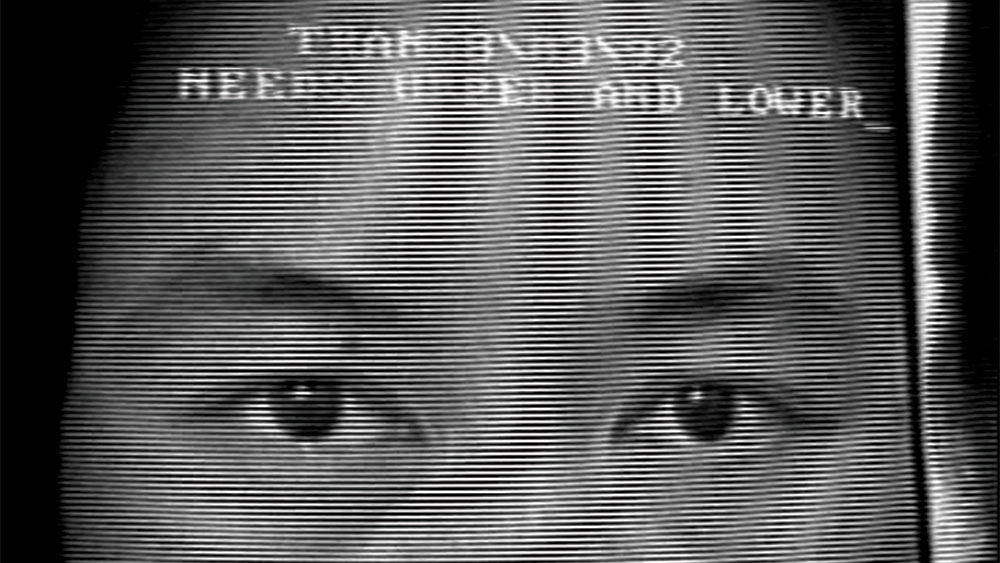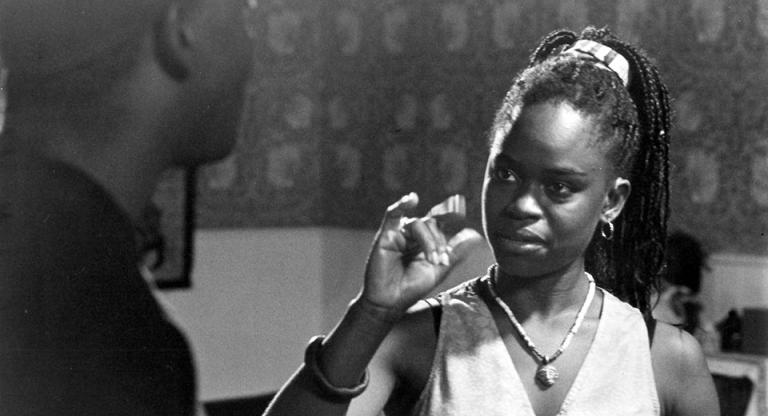Sentient.Art.Film’s online series “My Sight is Lined with Visions: 1990s Asian American Film and Video” may be the fullest delivery yet on the potential of COVID-era repertory film streaming. Programmed by Abby Sun and Keisha Knight, the series collects work from the nineties and early aughts, an abundant time in digital non-fiction and experimental image-making, featuring artists such as Shu Lea Chang, Jon Moritsugu, and Roddy Bogowa, and including several recent restorations and difficult-to-find works. The platform is experiential and easy to lose yourself in. New critical essays have been commissioned for each of the works, and links to additional writing are generously scattered throughout. Tran T. Kim-Trang’s eight-part Blindness Series (1992-2006), a decade-spanning discursive analysis of different forms of image loss, feels especially at home on such a platform; its ten- to thirty-minute episodes can be watched in any order and benefit tremendously from the thoughtfully critical piece by film writer Emerson Goo.
Proceeding chronologically, the first segment of Blindness, aletheia (1992), functions as a hyperkinetic index of Tran’s preoccupations — voyeurism, desire, racialized perception of eyes and sight, trauma, and language — scrapbooked together at a breakneck pace recalling her West Coast punk contemporaries. Here she borrows liberally from other sources: images from Brazil, audio of a sexual fantasy involving blindness from Lizzie Borden’s Working Girls, music by punk group Angry Samoans, and text by Derrida (another recurring preoccupation of Tran’s) and Foucault. This overabundance of information is one of two modes in which the series works best, the other being the more traditional documentary segments: ekleipsis (1998), about a group of Cambodian immigrants who developed psychosomatic “hysterical” blindness and the connections between this condition and the Cambodian civil war; and amaurosis (2002), a portrait of Dat Nguyen, a physically blind Vietnamese-American classical guitarist. As Goo writes in his essay, this foregrounding of blind subjects is far more affecting than Tran’s occasionally troubling academization of blindness-as-metaphor. Nguyen’s discussion of his sense of touch and creative inspiration does indeed make Tran’s visual simulations of blindness feel inadequate.
Tran’s fixation on blindness — as condition, metaphor, or culture — is never explicitly explained, instead encompassing a boundless swath of tangential interests. operculum (1993), the only segment that features Tran on camera, is filmed surreptitiously as the filmmaker attends consultations with a number of (white, male) Los Angeles plastic surgeons who specialize in blepharoplasty, or the widening of the eyes through removal of muscle and fat from the eyelids. The surgeons continually use phrases like “more feminine” and strongly imply that the benefits of the procedure are assimilatory. As the film progresses, the viewer is bombarded with textual warnings of side effects which, of course, include possible blindness. Conceptually, it is perhaps the most straightforward segment in the series, but, as Michelle Dezon says in 2016’s More Than Meets the Eye: The Videos of Tran T. Kim-Trang, by simply keeping Tran in frame (the doctors, save for their hands, do not appear on camera) while she is being objectified by a Western gaze, operculum effectively “draws the Asian American women's eye away from those who would want to alter its contours” and “offers a critical reflection on how power determines the field of vision.”
Sentient.Film.Art will be hosting a Q&A with Tran T. Kim-Trang on their Instagram at 7 PM EST.




